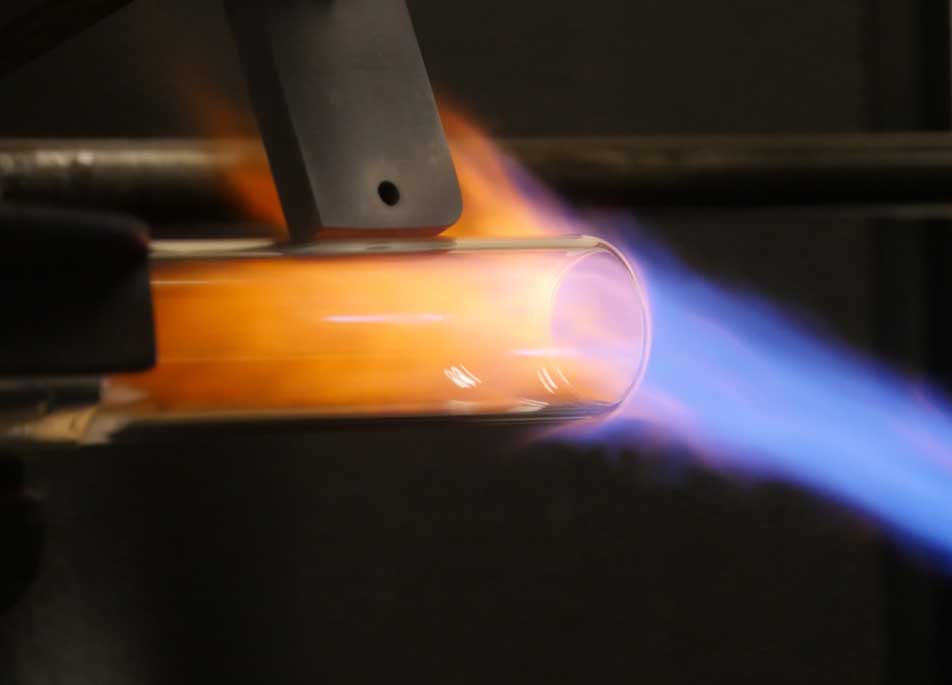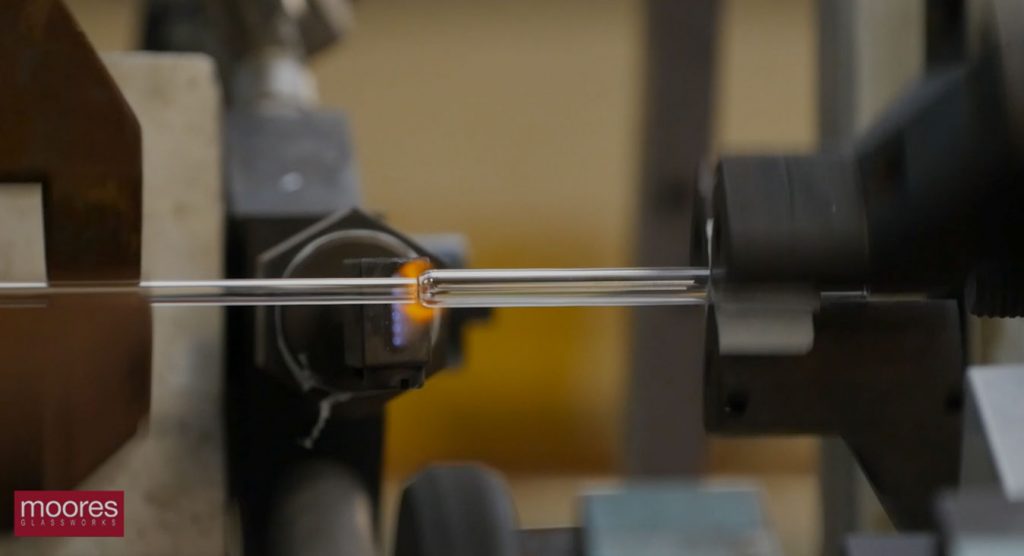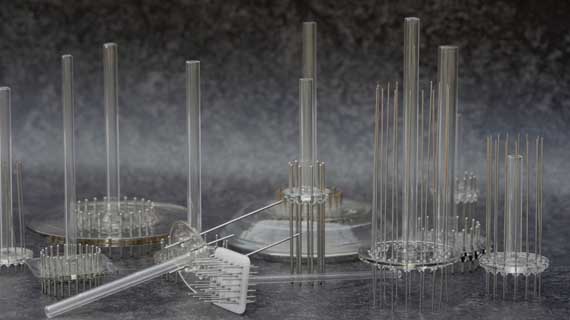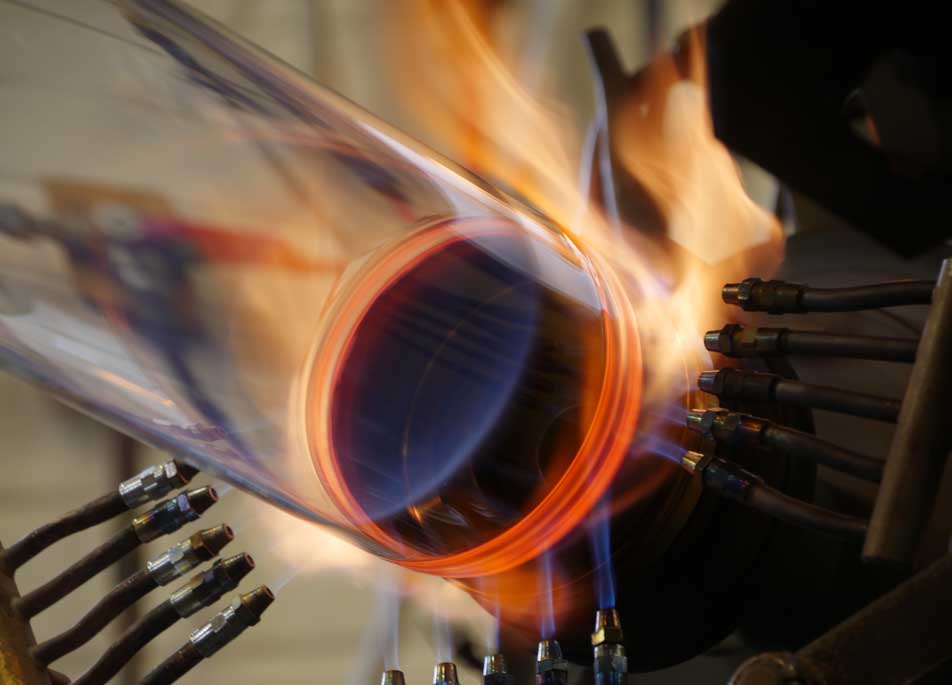At Moore’s Glassworks, we have been moulding, forming, and shaping glass for over 40 years.
Over that time, we have come to learn so much about this versatile and flexible material.
While the technology has improved, and we now have state-of-the-art auto lathes to form glass with ultimate precision, there is still a much needed human element to the quality control in our glass blowing.
Take a look outside and you will see the product of many glass manufacturer’s work all over the place.
From car windows and ornamental vases to beer bottles and reading glasses, there are lots of examples of glass being used throughout modern society.
There are many stunning and surprising facts about this material, and here are our top 7, starting with where it all began.
1. Man-made glass dates back around 4000 years
While there is a lot of contention about which region the science of making glass was truly discovered, the time period is under no debate.
Around 4000 years ago, sometime around 2000BC, workers in Mesopotamia and Egypt discovered how to create glass.
How do we know this?
Well, inside the London Museum is an ornament bearing the hieroglyph of Thutmose III, who reigned as the pharaoh of Egypt around 1450 BC. This, among other archaeological finds, show that glass was being created, and moulded at this time.
So how did it work?
Glass manufacturing in this time period was very different to what it is now. Studying the chemicals of these found artefacts points to the use of quartz pebbles and plant ashes. These would have been burnt down until they formed glass in liquid form, which could then be shaped.
We’ve come a long way since then, but glass has never stopped being used for vases and ornaments.
2. Glass can form in natural ways
But it’s not just humans who can create glass.
Nature has its own way of forming sculptures from this material.
For example, when lava from volcanoes is rapidly cooled down when thrown into the air, a material known as obsidian is formed. Often a deep, black colour, this is similar to the glass normally found in windows but a lot tougher.
Another natural form of glass are fulgurites.
Amazingly, as a lightning strike hits rock or silica sand, glass formations can rise from the ground in the shape of the strike.
This phenomenon is known as fulgurite. As most lightning strikes hit the ground at around 2500 degrees Celsius, this is enough to melt the material it hits. A temperature of around 1800 degrees is a rough minimum needed to form a fulgurite.
Unsurprisingly, these can be found in high areas, such as up mountains, that are more susceptible to such strikes.

3. Venice was once known as the glass manufacturing capital of the world
As we mentioned earlier, Moore’s Glassworks has been manufacturing glass for over 40 years, but some glass manufacturers go back centuries.
Around the 12th century, Venice became famous for its glassmaking capabilities. Through connections with the middle East, glassblowing methods that had been created and defined in Syria and Egypt were passed onto European shores.
From the new hub in Venice, glass was sent all over the world.
A couple of centuries later, and Venetians were spreading their talents across the globe, bringing with them the glassblowing equipment needed to produce fine products at speed (as well as creating transparent glass).
Glass manufacturing was already rapidly underway in London, and America quickly followed, with the first glass manufacturing plant opening in Jamestown, Virginia in 1608.
4. There aren’t many materials as sustainable as glass
Glass is a material that is as environmentally friendly as it gets.
100% reusable and recyclable, glass has one of the quickest turnaround times of any material, being reshaped and reused in 30 days in some instances.
So, how does glass get recycled?
Well, the process is simple. As glass gets handed over to the glassworks, it is crushed, before being melted. You now have a liquid which you can mould and form into any shape you want and that can be back on the shelves within a month.
Used glass (often known as cullet) has a low melting point compared to many other raw materials, which means that the energy used throughout the recycling process is much less.
All of this makes recycling glass even more important, and makes the material itself, one of the best to use for packaging and storage.

5. The Romans were the first to use glass for windows
Around the 1st century AD, the Roman’s began to produce glass on a large scale. This rapid rise in production led to the first glass being used for windows.
While these windows wouldn’t resemble the transparent ones we look out of today (they would have probably been black) this was the birth of the window as we know it.
Around a millennium later, and stained glass is known to be used in buildings such as churches. Built in the late 11th century, the Augsburg cathedral in Bavaria, Germany, is said to be one of the earliest instances of stained glass being used.
So, when did glass become transparent?
In Britain, glass windows were seen, albeit rarely, in the 16th century. These replaced windows made of animal horn and other materials such as paper.
Through the centuries, the use of glass on windows became more common and affordable, until most houses across the country began to take advantage of the properties of transparent glass in their homes.
6. Glass isn’t a normal solid material
Okay, hear me out on this one.
While glass is solid in terms of its nature (if you knock on your window it won’t bend) it technically isn’t classed as a completely solid material.
Instead, it is labelled an amorphous solid.
What this means is that the molecules in glass are still moving. Unlike a solid where the molecules are rigid and unmovable, or a liquid where the molecules move freely, an amorphous solid’s molecules move at a very slow rate.
The molecules in glass are not rigid, and hold no pattern, which is why it is more susceptible to breakages.
The molecules inside glass have no structure, which leads to the many different shards that break off when glass is shattered.
But, before you panic thinking over time your windows may turn into a blob, a study found it would take longer than the existence of the universe for glass to do this.
7. Glass has been the linchpin for many scientific and technological inventions
As the use of glass became more widespread, it’s uses became more varied.
Just as Moore’s glass, we showcase many uses of glass in the forming of our cathode ray tubes, vacuum viewports, glass condom moulds and multi-pin bases.
Screens on smartphones, cameras, televisions, fibre optic wires, and more are all inventions that have changed the shape of the world we live in, and that all contain glass.
Not just ornamental, glass has many qualities that make it ideal for inventions of this nature.
There’s a reason Steve Jobs was adamant the first iPhone would have a glass screen instead of a plastic one.
It’s tough, clean, transparent, recyclable and shapable, making it a dream material for inventors and manufacturers alike.

Moore’s Glassworks
Our team of expert glass technicians produce many different products every day.
From the products mentioned above, to custom glassworks fitted exactly to the customer’s needs, we are sure to be able to provide what you’re looking for.
Get in touch today to see what Moore’s Glassworks can do for you.


Leave a Reply